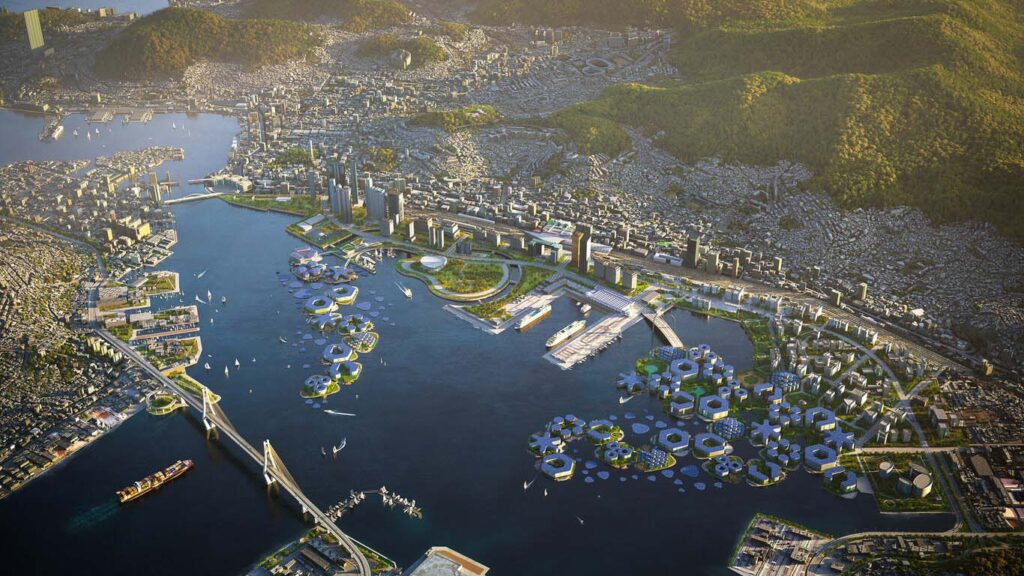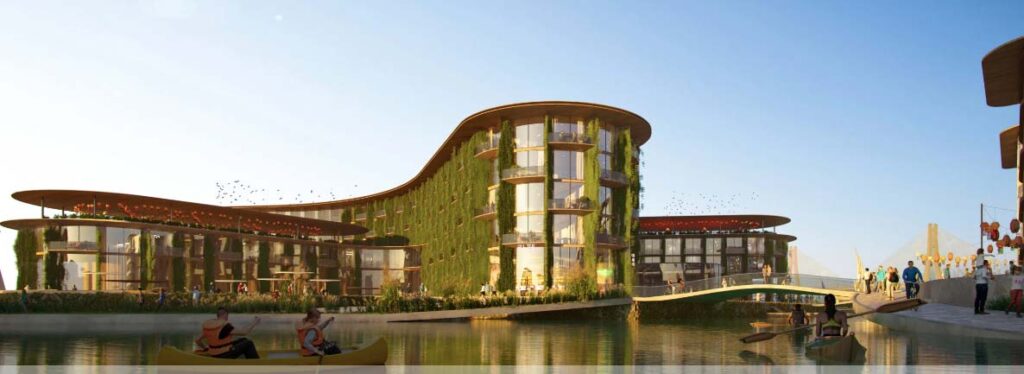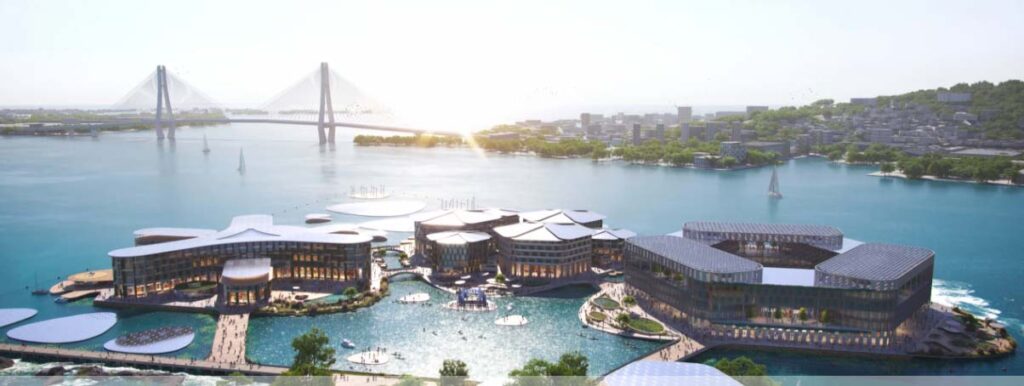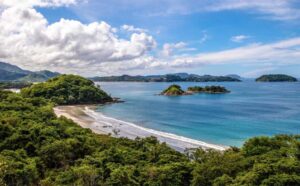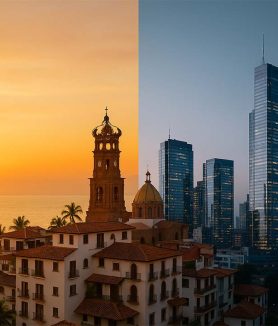Oceanix Busan is the floating city that can adjust to rising sea levels; a bold solution to meet the challenges of climate change. This exciting project has been designed by the architects BIG-Bjarke Ingels Group and SAMOO (Samsung), in collaboration with the New York company OCEANIX, UN-Habitat and the Busan Metropolitan City. They expect the floating city to be ready before 2030.
Unveiled on April 26 at the UN headquarters, Oceanix Busan is the first sustainable floating city prototype to be built in South Korea. With two out of every five people in the world living less than 100 kilometers from the coast and 90% of megacities vulnerable to sea level rise, this initiative becomes hope for millions of people at risk.
“Today is a critical milestone for all coastal cities and island nations on the front lines of climate change,” said Philipp Hofmann, Executive Director of OCEANIX. “We are on track to deliver OCEANIX Busan and demonstrate that floating infrastructure can create new terrain for coastal cities looking for sustainable ways to expand into the ocean, adapting to rising sea levels.”
How will Oceanix Busan work?

Oceanix Busan is an ambitious urban project that seeks to fulfill a specific purpose in each neighborhood: coexistence, research and accommodation. Spanning between 30,000 and 40,000 square meters of mixed-use programs per neighborhood, this development has been conceived to harmonize indoor and outdoor living, taking advantage of the smooth lines and terraces of the low-rise buildings on each platform. Its design, surrounded by the blue lagoon, offers vibrant and accessible spaces for recreation, art and performance.
A highlight of Oceanix Busan is its ability to adapt and grow organically. Starting with an initial community of 3 platforms with 12,000 residents and visitors, the project has the potential to expand significantly to more than 20 platforms in the future. In addition, the floating platforms are equipped with production sites, which feature photovoltaic panels and greenhouses that can be adjusted according to Busan's changing needs.
This pioneering project is based on six integrated systems that make it sustainable and respectful of the environment. The zero-waste system and circular systems, as well as the closed-circuit water system, guarantee efficient and responsible management of resources. Food production is carried out in an innovative and sustainable way, while net energy is achieved through on-site generation via photovoltaic panels on roofs and floating platforms.
Mobility is also a priority at Oceanix Busan, where innovative and environmentally friendly transport approaches are promoted. Lastly, the project is committed to the regeneration of coastal habitats, strengthening the connection between the community and its natural environment.
The future is already a reality with Oceanix Busan, an inspiring vision that shows how architecture and innovation can come together to protect our cities and the environment from climate change.

